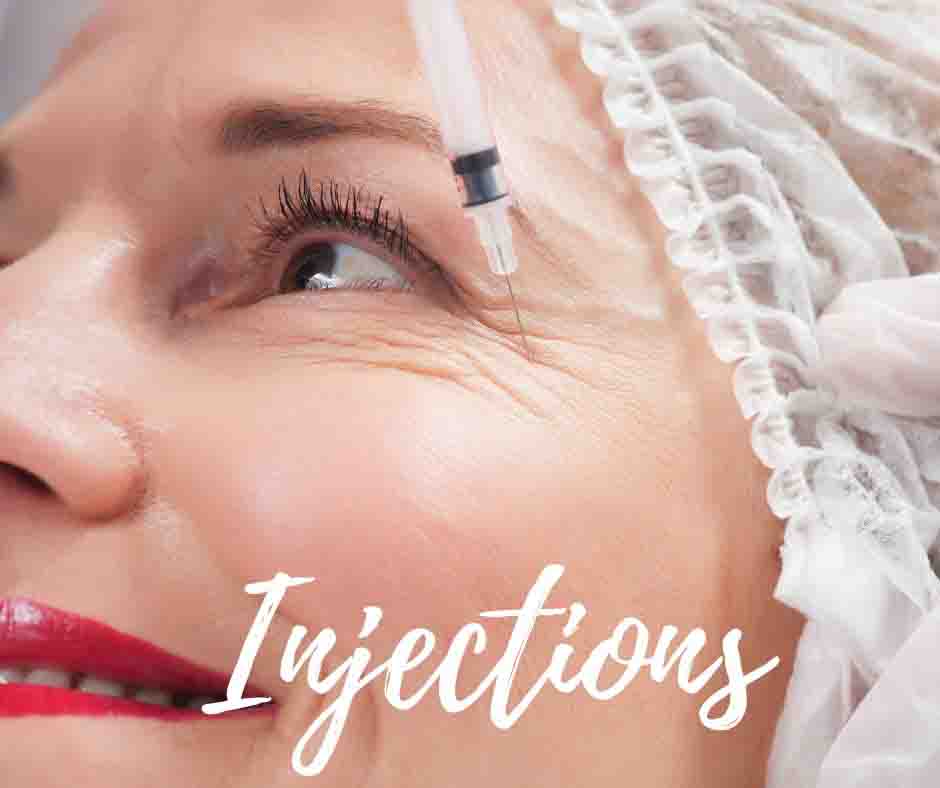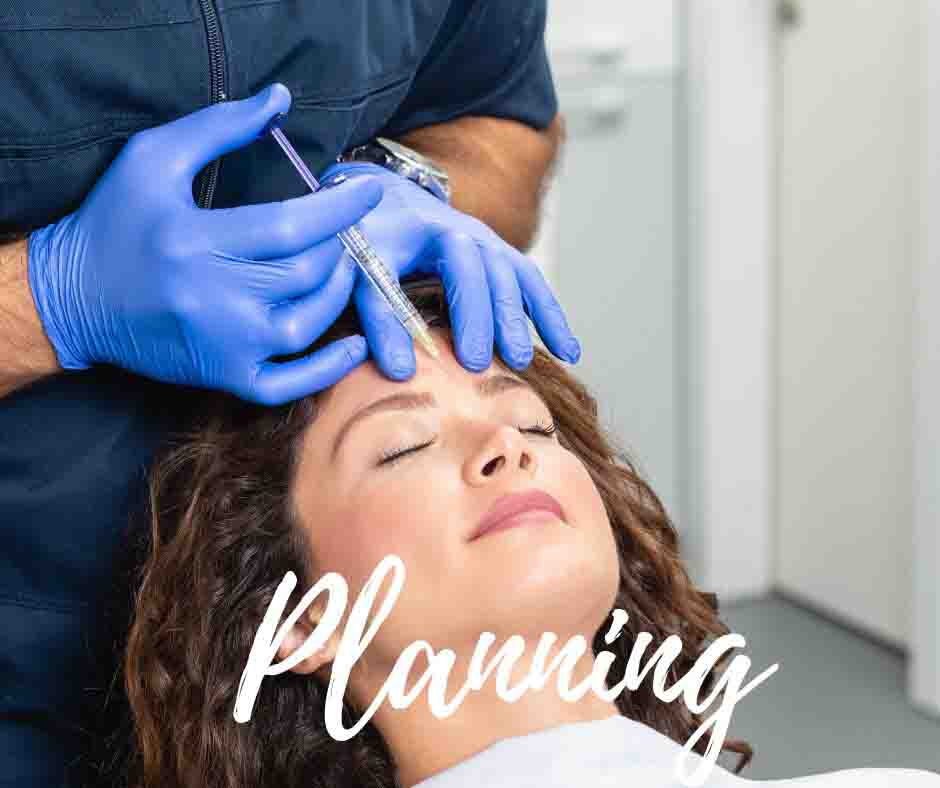Wrinkle-Relaxing Injections | Neuromodulators
Wrinkle Relaxers is a powerful nonsurgical option to reduce visible aging.
Over 5 million people in North America receive wrinkle-relaxing injections each year, making it the most popular and effective anti-wrinkle treatment on the market. With more than 90% of patients satisfied with their results, the popularity of wrinkle relaxers continues to grow, including in Quebec. If you’re considering Wrinkle Relaxers treatment in Montreal, it’s essential to understand what the procedure involves and what to expect. Let’s explore some key facts about wrinkle relaxers that can help you make an informed decision before your treatment.
Essentials of Treatment: Wrinkle Relaxers
During your consultation for Wrinkle Relaxers, we’ll inform you about techniques, possible complications, convalescence, and cost-related information.
Techniques and Regions

Wrinkle-relaxing injections are widely used to treat expression lines, particularly in the glabella (the area between the eyebrows), which is the most frequently requested area. It also effectively targets crow’s feet at the outer corners of the eyes and horizontal forehead wrinkles. Additionally, injections can be administered at the chin level.
For enhanced results, Wrinkle Relaxers can be combined with other rejuvenation methods, such as hyaluronic acid fillers.
Wrinkle Relaxers such as injections in the jaw muscles are one of the most requested areas to treat in women.
Injections of Wrinkle Relaxers in the masseter muscles will help reduce muscle contractions and therefore help reduce the volume of the muscles, which can help make the face appear more oval. It will make the jaw appear less square and less prominent.
This technique can also be used for those with severe bruxism (muscle contractions). These individuals suffer severe and painful contractions, often at night-time, as well as clenching of the jaw.
Sweating is our body’s natural response to an increase in body temperature and emotions like anxiety.
Hyperhidrosis is the excessive production of sweat often occuring in the underarms, hands, and feet. Those suffering from hyperhidrosis are often embarrassed by excessive sweat. Wrinkle relaxer injections are also effective in controlling the excessive perspiration associated with hyperhidrosis.
Results generally show up after 3-4 days post-treatment and the effects can last 6-12 months depending on the individual.
Most patients return to their usual daily activities immediately after treatment. Side effects are virtually nonexistent.
Since the early 2000s, wrinkle-relaxing products may have neurotoxic properties that are effective in treating repetitive migraine attacks.
To maintain the effects of the treatment, injections must generally be repeated every 3 months. But can also be effective in patients suffering from episodic migraines, with visible improvement within 2 months.
An improvement in quality of life
Medical evidence shows that a particular wrinkle-relaxing product can offer a significant benefit for patients suffering from chronic migraines, it helps reduce the number of days disrupted by migraine and thereby improve quality of life. However, not all migraines can respond to treatment. However, it is scientifically and clinically proven that it can be effective in some patients whose migraine begins in the frontal or temporal area.
The principle of the treatment consists of several injections where patients feel stiffness in the neck, around the eyes and at the temples to reduce the density of the sensory fibers.
Process and Risks

During your consultation, Dr. Chen Lee will do a minor clinical examination to determine the quantity of Wrinkle Relaxers recommended for your needs and desires. He will provide detailed information regarding the process of the intervention, follow ups, and he will show you photos of his past work.
You do not need to be fasted for this treatment.
It is important that you do not wear any facial skincare or makeup products, as your face must be totally clean for the injections.
To reduce the risk of bruising and bleeding, we recommend avoiding blood thinning medications like aspirin one week before and after your treatment.
You can return to your usual routine the same day as your treatment, but we recommend avoiding intense physical activities or massaging the treated area to limit the possibility of product migrating to peripheral muscles.
Avoid creams and skin makeup (foundation, concealer, etc.) if possible on the treated area to prevent any redness, irritqtion, or infection.
Possible complications are rare but can feel frustrating:
- Locally: redness or hematoma (bruising) at the injection site; swelling/puffiness around the eyes that can show up after 4-5 days and diminish over a few days or weeks, trouble with sensitivity and sensations of tension in the forehead, fleeting headaches or aching eyes.
- Imperfections in results: persistance of wrinkles, asymmetry, raising of one eyebrow, difficulties with showing facial expressions. These problems can be fixed with the addition of product or through other techniques.
- Complications: headaches, drooping of the eyebrow or eyelid, dry eye, and even more rarely allergies, nausea, vertigo, fatigue, cold-like symptoms, and dry mouth or dry skin.
The goal of aesthetic treatments, particularly with Wrinkle Relaxers, is for you to feel satisfied with your treatment and appearance.
In the case of Wrinkle Relaxers, anti-aging effects are obtained in part by reducing or preventing certain facial expressions.
Price and Recuperation

In Canada, 2 brands dominate the commercial market in Wrinkle Relaxers. Both products are commonly used and work exceptionally well for cosmetic treatments.
- Allergan received approval by the FDA for therapeutic use to neuromodulate disorders of muscular movement in 1989. Allergan began clinical trials to determine it’s safety and effectiveness for the cosmetic treatment of moderate to severe wrinkles. Thanks to detailed research on it’s use for aesthetic purposes, in 2002, the FDA approved Allergan’s neuromodulator as a temporary aesthetic treatment for moderate to severe wrinkles caused by brow furrowing in adults. It was the first product of it’s kind to be approved for cosmetic usage.
- Galderma Laboratory distributes a competing popular commercial neuromodulator. This wrinkle-relaxer is approved in 69 countries around the globe and has been used for over 25 years in clinics worldwide. The medication acts as a local muscle relaxant (or neuromuscular blocking agent). It is used for both aesthetic and therapeutic purposes. One of its cosmetic uses is to temporarily reduce moderate to severe glabellar lines (commonly referred to as the “11 lines”).
Most patients can resume normal daily activities immediately after cosmetic injection of neuromodulators. Side effects are uncommon.
Results generally apparent 3-4 days after injection. The duration of action can persist up to 6-12 months depending on the individual.
Come disover why 97% of women treated with botulinum toxin are satisfied with their results!
The payment for non-surgical treatments is done on the day of your appointment with Dr. Chen Lee. You can pay by Interac, credit card (Visa or Mastercard), cash, or Interac e-Transfer.
The cost of Galderma’s brand of neuromodulator is $14 +taxes per 3 units.
The cost of Allergan’s brand of neuromodulator is $17 +taxes per 3 units.
During your consultation with Dr. Chen Lee you will be evaluated and told the recommended number of units to achieve the results you desire.
You can expect some mild pain and discomfort during the injections from the needle.
After receiving Wrinkle Relaxers injections you will have small water bumps that will dissipate 15 minutes after the procedure.
It’s possible that you may experience some dizziness after your first treatment, but usually that stops after a short few minutes.
There is not any recovery or downtime needed otherwise after your neuromodulator injections, making it an easy procedure to do at any time!
FAQ – Wrinkle Relaxers
Wrinkle Relaxers can be combined with filler (hyaluronic acid) injections. The treatment is done in about 20 minutes. You may resume your regular activities on the same day of treatment, although you should avoid physical activity for the first day.
It is natural to have many questions about aesthetic treatments. With his expertise and knowledge, Dr. Chen Lee is determined to help you understand the risks associated with treatment which empowers you to make an informed and educated decision concerning the procedure.
A neuromodulator is a chemical substance that diminishes muscle contractions by working at the meeting point of the nerve and muscle (muscle relaxant).
The injections are generally redone 2-3 times per year for optimal results. It is important to wait at least 3 months between Wrinkle Relaxers injections due to the possibility of your body becoming resistant to the product (vaccine effect) if you use it too frequently.
In the case of thick skin tissue or “deep folds,” it may be necessary to combine the treatment with other procedures (such as fillers) to optimize your results. Dr. Chen Lee will adapt the dosage, frequency, and associated treatments to every individual and their unique needs.
The effects generally last between 4-6 months and will last longer with repeated injections every 6 to 10 months. Every individual is unique and will metabolize the product slower or faster than other individuals, impacting how long the product will last for you.
Over time, the facial muscles become more relaxed and return to their original state.
Wrinkle Relaxers and hyaluronic acid filler are distinctly different chemically and have unique biological actions. One does not replace the other. Hyaluronic acid fillers are used to treat deep wrinkles and to add volume to the face, while Wrinkle Relaxers reduces the appearance of wrinkles by paralyzing the facial muscles to prevent creasing. While their actions are different, they are often used in a complementary role to enhance cosmetic outcomes.
It has been found that Galderma’s brand of neuromodulation acts more quickly than Allergan’s brand, and may last longer. Generally, the two neuromodulators are dosed uniquely. However, for similar cosmetic outcomes, the price difference is negligible.
Clinical trials and studies have shown that Galderma’s brand of neuromodulator may last longer (4-6 months). However, some patients believe that one brand lasts longer while others find the opposite or do not notice a difference whatsoever!

